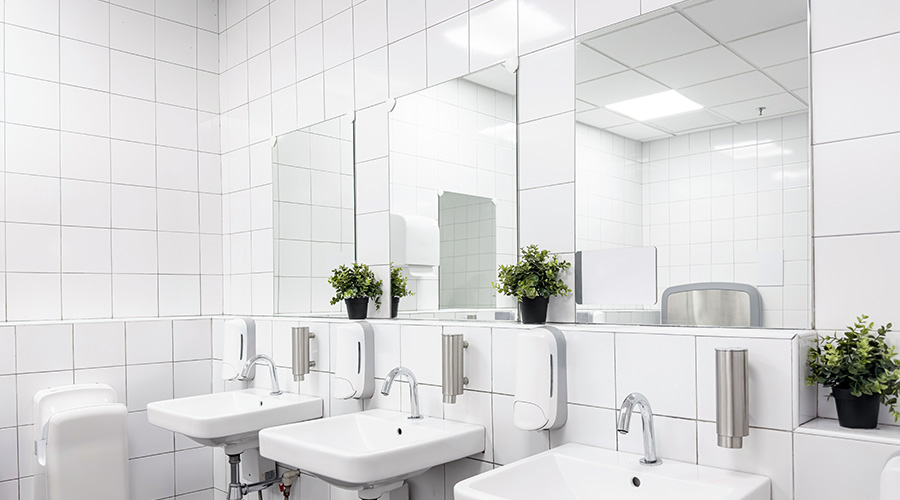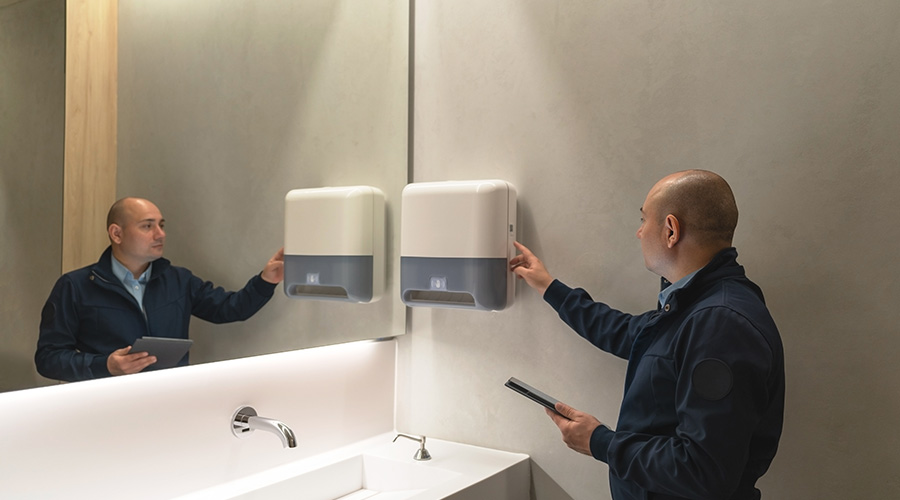Restrooms: Specification Starts with Preparation, Prevention
Restrooms present maintenance managers with a range of challenges related to sustainability, water conservation and hygiene. Fortunately, managers have a growing array of products — from paper and soap dispensers and paper products to cleaning chemicals and plumbing fixtures — designed to address these issues.
But to fully take advantage of the benefits these products offer and to meet the challenges restrooms present, managers will need to stay abreast of product advances and consider post-installation maintenance and cleaning requirements of these products.
Sizing up the Challenge
Successful maintenance managers understand the importance of advance preparation and prevention. Related to restroom maintenance, preparation begins with being constantly aware of restroom conditions, staying up to date on the latest advances in products, and having a superior specification process to address restroom needs.
In the first two phases, the process includes focusing on maintainability and sustainability to increase user satisfaction, improve safety and hygiene, extend performance life, and lower life-cycle costs.
In today's tough economic times, managers also need to be aware of changing conditions that can undermine their efforts to improve sustainability and performance. For example, they can implement sub-metering of plumbing systems to detect leaks and other water losses in their early stages before they become major problems.
In justifying the need for such measures, consider this statistic: The average household wastes 12,000-17,000 gallons of water annually when users wait for the water to heat up after turning on the hot-water tap. Extrapolate this waste to a commercial or institutional facility with hundreds of occupants, and the result is huge and costly losses managers can prevent.
They also must be aware of the equipment in their facilities that can create waste and undermine efforts to lessen the restrooms' impact on the environment. As an example, a 30-year-old building with fixtures that use 6 gallons per flush (gpf) wastes a huge quantity of water annually, compared to new 1.28-gpf fixtures.
Related Topics:















